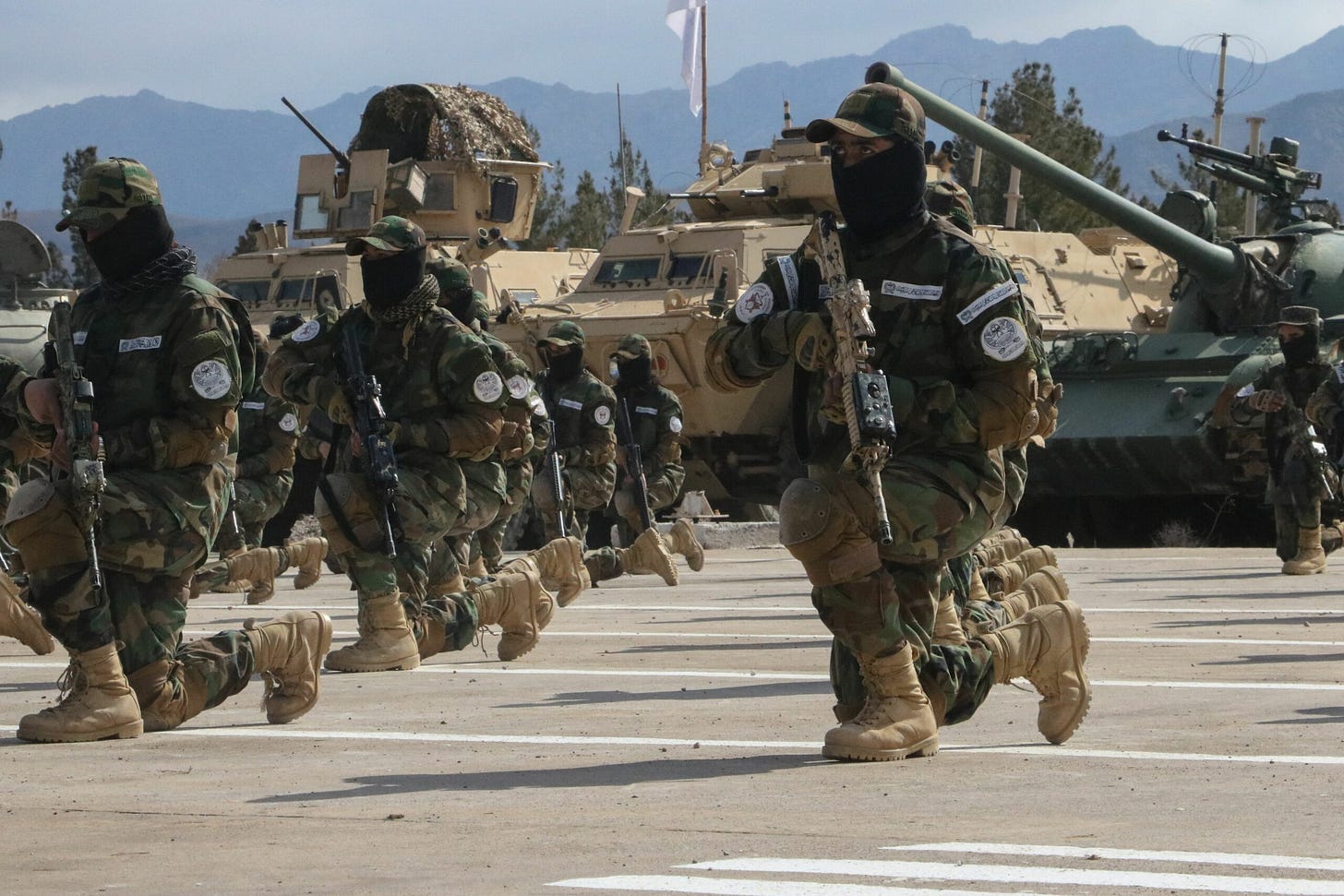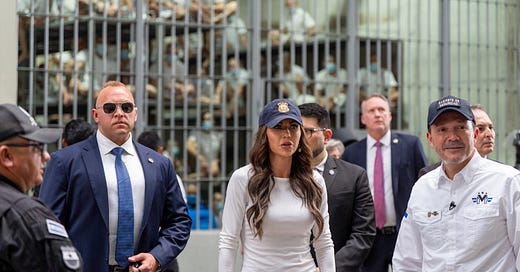The Taliban Are Who We Thought They Were
Once again under Taliban rule, Afghanistan has become oppressive, brutal, and dangerous to its neighbors and the world.

When the Taliban took control of Afghanistan in the mid-1990s, they established one of the most brutal and oppressive regimes in the world and harbored international terrorists. Since regaining control of the country in 2021, they have reverted to their old behavior, once again using violence against Afghans to maintain their grip on power. As a result, Afghanistan has become a “significant coordination site” for threats to the United States, Europe, and Asia, according to a leaked Pentagon assessment.
Terrorism both at home and abroad is a core, unchanging element of what the Taliban are and have always been. It shouldn’t shock anyone that the Taliban broke their purported promise to curb terrorism. They rely on violence and corruption to control the population. Guarantees of women’s and girls’ access to work and school have proven hollow amid one of the worst humanitarian crises in recent history. Women are barred from almost every facet of public life. International apathy, born of exhaustion with Afghanistan, so emboldened the Taliban that they expanded their ban on women’s employment to include local United Nations employees. This is an attack on both the U.N.’s mandate and a lifeline of humanitarian assistance vital to more than two-thirds of the Afghan population. The country won’t see any significant economic growth without women’s full participation in the economy, a U.N. Development Program report concluded in April. Afghanistan’s prolonged economic crisis and the scarcity of goods and opportunity for its people will certainly contribute to further destabilization in the region. Afghans already make up one of the largest refugee populations in the world, and as the economic situation deteriorates, further migration into Iran, Pakistan, and Central Asia will be the inevitable result.
The Taliban, of course, care nothing for the security and prosperity of Afghanistan nor the stability of their region. Oppression is their highest calling. They consistently prioritize self-preservation over critical humanitarian needs. They have seized both cash and humanitarian supplies flown into the country without accountability mechanisms. This has allowed them to influence local distribution networks, setting up shadow nongovernmental organizations to distribute aid to their loyalists. Meanwhile, Afghan children are dying from malnutrition and curable diseases. Ironically, the Taliban claim they have increased revenues and reduced corruption. Yet there’s little evidence the Taliban are spending state resources to benefit Afghanistan’s general population. Instead, government employment opportunities and salary levels have tipped in favor of Taliban members and supporters at the expense of those without ties to the Taliban and, of course, women, regardless of their work experience and education. At a public hearing organized by the House Oversight Committee, the special inspector general for Afghan reconstruction said he couldn’t guarantee that American taxpayer dollars hadn’t been given to the Taliban through the flows of U.S.-supplied aid to the country since 2021. He also said there was a high risk of misuse of U.S. government funds because of Taliban interference with the U.N. and nongovernmental organizations. In other words, it is likely that U.S. taxpayer money intended to relieve famine and pestilence has instead funded the Taliban, and through them, likely al Qaeda and other international terrorist groups.
Many red flags about the proliferation of terrorist groups have gone unheeded since the Taliban overthrew the previous government. A recent White House report on the 2021 U.S. withdrawal from Afghanistan argued that the terrorist threat there had weakened since 2001. This is almost undeniably true, but speaks only to the past, not the future. The report also asserted that the resources the United States had committed to maintain Afghanistan’s security had led to “underinvestment” in our capacity to respond to other urgent security challenges. Again, this may be so, but that is no argument for enabling chaos that threatens global geopolitical stability and our own national security. More than a dozen terrorist organizations currently operate in Afghanistan, according to the CIA. By some estimates the Taliban are spending as much as half their budget on internal security but also seem to lack any real political will to rein in violence by other terrorist groups. Al Qaeda in particular seems to be as cozy with the Taliban as ever: A U.S. drone strike killed top al Qaeda leader Ayman al-Zawahri in July 2022 while he was hiding in a Kabul safehouse adjacent to property owned by Sirajuddin Haqqani, the Taliban’s interior minister and a staunch al Qaeda ally. Even where the Taliban does have the will—or at least an incentive—to suppress other terrorist groups, they appear to lack the capacity. Numerous attacks by Islamic State Khorasan Province (IS-K) in the last two years against women, children, and ethnic minorities like the Hazara have met little to no response from Taliban leaders. IS-K, which is in conflict with the Taliban, claimed credit for attacks on Russia’s embassy and a hotel in Kabul that had been frequented by Chinese nationals. The Biden administration suggested that a Taliban attack that allegedly killed the IS-K “mastermind” of the Abbey Gate bombing at Kabul airport demonstrated that the Taliban were taking responsibility for ensuring Afghanistan would not become a safe haven for terrorists. Hopefully, they’re right, but most of the evidence points the other way—that the Taliban can’t or won’t prevent even rival terrorist groups from perpetrating violence inside Afghanistan. The prospects of the Taliban preventing IS-K or al Qaeda from conducting international attacks from Afghanistan therefore seem minimal. The Taliban is thriving because of international inattention and unregulated humanitarian aid. The best way to hurt them—to protect the rights of Afghan women, girls, ethnic minorities, and the millions of Afghans who still yearn for a better life—is to cut off the Taliban’s financing. Preventing the Taliban from stealing from the Afghan people is also the best way to ensure aid and economic resources reach those who most need it. Though the international community’s leverage has changed since the multinational withdrawal in 2021, opportunities still exist to make a difference—both in support of vulnerable Afghans and global security as a whole. As the experience of two decades has shown, there are no easy answers in Afghanistan. But marginal improvements are possible. Distribution of humanitarian aid should, as much as possible, bypass the Taliban and the government of Afghanistan and go directly to the people. The foreign actors who provide the Taliban with access to hard currency while locking up access to Afghanistan’s natural resources—legally or illegally—should be evaluated for terrorist financing. Perhaps most importantly, we Americans must not forget the millions of Afghans who continue to fight for their basic human rights. They are the key to a stable, successful future Afghanistan, and therefore also American and international security.









